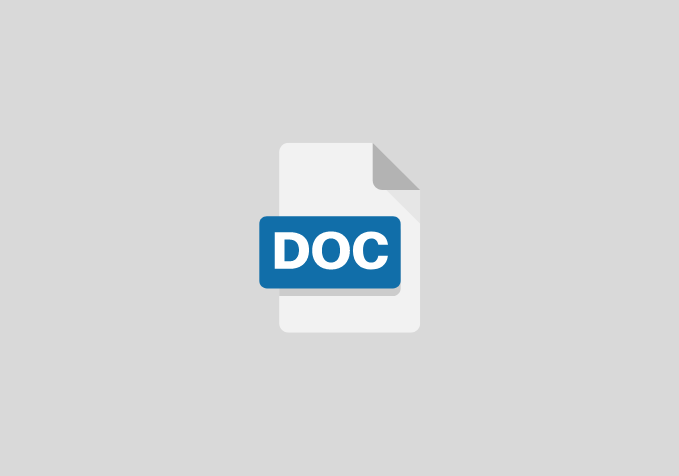A Proposal on Design and Construction of Digital Distance Measuring Instrument
CHAPTER ONE
AIM AND OBJECTIVES
The aim of this project is to design and construct a suitable electronic digital distance measuring device. To achieve this aim the following objectives are set;
- To design an electronic measuring device using AT89S52
- To write appropriate program for the microcontroller
- To construct and test the designed
CHAPTER TWO
LITERATURE REVIEW
MEASUREMENT
Measurement is the assignment of a number to a characteristic of an object or event, which can be compared with other objects or events (Kirch and Wilhelm, 2008). The scope and application of a measurement is dependent on the context and discipline. In the natural sciences and engineering, measurements do not apply to nominal properties of objects or events, which is consistent with the guidelines of the International vocabulary of metrology published by the International Bureau of Weights and Measures (International Bureau of Weights and Measures,2008). However, in other fields such as statistics as well as the social and behavioral, measurements can have multiple levels, which would include nominal, ordinal, interval, and ratio scales (Kirch and Wilhelm, 2008).
Measurement is a cornerstone for trade, science, technology, and quantitative research in many disciplines. Historically, many measurement systems existed for the varied fields of human existence to facilitate comparisons in these fields (Pedhazur and Elazar, 1991). Often these were achieved by local agreements between trading partners or collaborators (Pedhahazur and Elazer, 2011). Since the 18th century, developments progressed towards unifying, widely accepted standards that resulted in the modern International System of Units (SI). This system reduces all physical measurements to a mathematical combination of seven base units which are: kilogram, metre, candela, second, ampere, Kelvin, and mole. The first proposal to tie an SI base unit to an experimental standard independent of fiat was by Charles Sanders Peirce (1839–1914), who proposed to define the metre in terms of the wavelength of a spectral line (Crease, 2011).The metric system features a single base unit for many physical quantities. Other quantities are derived from the standard SI units. Multiples and fractions of the units are expressed as Powers of 10 of each unit. Unit conversions are always simple because they are in the ratio of ten, one hundred, one thousand, etc., so that convenient magnitudes for measurements are achieved by simply moving the decimal place: 1.234 metres is 1234 millimetres or 0.001234 kilometres (Crease 2011). The use of fractions, such as 2/5 of a metre, is not prohibited, but uncommon. All lengths and distances, for example, are measured in metres, or thousands of a metre (millimetres), or thousands of metres (kilometres) (Crease, 2011).
MEASURING INSTRUMENT
Instrumentation is technology of measurement which serves not only in science but in all branch of engineering and medicine and almost every human endeavor. Measurement may be used to monitor a process. A measuring instrument exist to provide the information about the physical quantity been measured. Measuring instrument is a device for measuring a physical quantity such as length, weight, temperature, current etc. The instrument indicates the value of the quantity which helps one to take appropriate action and decision (Kirch and Wilhem, 2008).
CHAPTER THREE
MATERIALS AND METHOD
The materials to be employed in this project include:
Advertisements
- Power supply which include battery, voltage regulator and filter capacitor
The battery used in this design is dry cell battery because it is easier and economical to use.
The voltage regulator 7805 is an electronic device used to maintain an essentially constant output voltage for a range of input voltage or load
Filter capacitor 100 microfarad in a power supply used to reduce the variation of the output
- Distance detector which include resistor and push button and circular object(wheel)
Fixed resistor used10kΩ.
A wheel is a circular object of about one meter in
- Signal conditioning unit with transistor as the active
- AT89S52 microcontroller signal processing unit
- Liquid crystal display
METHOD
Each of the following unit listed in section 3.1 is designed, tested and coupled together. The coupled system is constructed and used to carry out some distance measurement along side a tape rule.
REFERENCES
- Alan S. M, (2001). Measurement and instrumentation principles. New Delhi. British library cataloguing in publication data.
- Atmel co-operation, (2008). 8bit microcontroller with 8k bytes in-system programmable flash.
- AT89S52 data sheet.
- Crease, D. (2011). American journal of science. Note on progress of experiments for comparing a wavelength with a meter. P.203
- David, L. (2002). Hand book of batteries. United state of America, New York. McGrow-hill companies Inc.
- Fall, J. (2006). Note on voltage dividers and potentiometers. Gerald rectenwald. Sep. 29, 2013.
- http//www.bright hub engineers, (2012). Functions, advantages of digital measuring instruments over analogue instruments. Retrieved 22nd july, 2017.
- International bureau of weights and measures, (2006). The international system of unit. Note on measurement and measuring unit jan. 23, 2006.
- Kirch, V. and Wilhelm, K. (2008). Encyclopedia of measurement. Level of measurement encyclopedia of public health. Pp. 81
- Magori, V. (1994). Design & Development of Smart Ultrasonic Distance Measuring Device, International, journal of ultrasonic sensors, ultrasonic symposium. Vol. 1 Pp. 471-481. Nov.3, 1994.


